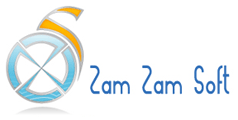Do search engines prefer your website? A lot depends on link popularity. We can make sure your link popularity is relevant, which will help you to move up in the organic listings on most major search engines. Link popularity refers to both the quality and quantity of links that point to your website. The links are called backwards links or incoming links.
Link popularity is used by the search engines as a measure of the credibility of the content on a web page. Incoming links are seen as a vote of confidence by the web page with the outbound link for the web page receiving the link.
Zam Zam Soft, doesn’t look at your website as a piece of static brochure-ware. Because we are involved in every aspect of internet marketing, we know how to make your website perform its varied roles. From a brand new concept, to a modernizing design, to periodic updates, we can be your long-term internet solutions partner.
Not all incoming links (or votes) are equal. Links from pages with a high page rank carry more weight than links from pages with a lower page rank; i.e. votes from pages considered more credible (higher page rank) are more important than votes from a web page considered less credible.
Search engines realize that website owners, particularly owners of commercial websites, are very selective about linking to other websites. Simply stated, website owners work hard to attract users and they are reluctant to let these users escape. In fact, most website owners will not post an outbound link unless the content of the destination page contains information necessary to fulfill the conversion goals of the linking page.
Having said this, building link popularity is a very important part of search engine optimization. Zam Zam Soft will ensure you have proper link popularity for your website and maintain a high priority with the search engines.
Link Building Campaign
Google patent implies that they closely watch the date documents are created, the average age of documents on the website, and how frequently the pages change over time. Document creation date is determined by the date on which the Google spider first indexes the document, either through its regular crawl or by manual submission.
For example, a page that is one day old and has ten incoming links may have a higher score than a page that is ten years old and has 100 incoming links, since the younger page has a higher rate of link growth. However, an excessively fast rate of link growth may actually hurt the score of a page, since, to Google that looks like artificial link accumulation.
The indication here is that older pages will generally be given higher scores than newer pages, but only if those older pages are continually adding new incoming links at a moderate pace. Also, Google takes into consideration the average age of all pages on a website. This means that a new page on an old website will score higher than an equally new page that resides on a new website.
Google watches how quickly inbound links develop over time, including how quickly they disappear. Google’s not just factoring in how many links you have now, they’re also taking into account the way in which those links behave and analyzing trends in the growth and decline in the number of links a page has.
A downward trend in the number of links to a page may indicate that the page is “stale” and hence deserves a lower score, while an upward trend indicates fresh content and deserves a higher score.
Ultimately, we need to ask ourselves… should the inbound links be only to the home page, or based on the patent info Google provides, should our strategy to place inbound links be changed from home page only to actual content based inbound links for higher destination page ranking?
When it comes to determining if a web page has been modified, Google will give greatest weight to changes in the title of a page, followed by changes in the anchor text of outgoing links on a page, then to changes in visible page text.
